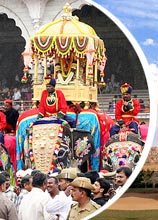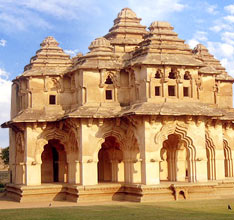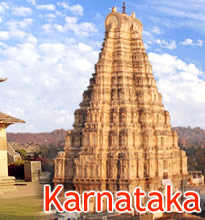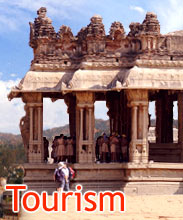 During
the 12th and 13th centuries AD, Halebid was the regal capital of the
Hoysala Dynasty. Literally meaning 'the ruined city', Hoysala was also
known by other aliases such as Dwarasamudra, which is derived from the
vast tank known as Dwarasamudra.
During
the 12th and 13th centuries AD, Halebid was the regal capital of the
Hoysala Dynasty. Literally meaning 'the ruined city', Hoysala was also
known by other aliases such as Dwarasamudra, which is derived from the
vast tank known as Dwarasamudra. This magnificent temple town has to bear the brunt of raids by marauding invaders, who robbed it of its treasures, leaving behind the ruins of the once-magnificent Shiva temple. In the face of persistent attacks, the Hoysalas then relocated their capital to Belur and this royal capital gradually reduced to a state of dilapidation and ruins.
The Hoysaleshwara and Kedareshwara temples in Halebidu are supreme examples of Hoysala temple architecture. Hoysaleshwara temple was built by Ketamala and attributed to Vishnuvardhana, the Hoysala ruler. It enshrines the deities of Hoysaleswara and Santaleswara, named after the king Vishnuvardhana Hoysala and his wife, Queen Santala.
The Hoysala temples are manifestations of the Vesara style of temple architecture characterized by star-shaped structures set upon raised platforms. The Vesara style was initiated by the Badami Chalukyas and further refined by the Kalyani Chalukyas. Nowadays, a vibrant tourism industry has emerged in Halebid around these fabulous temples.









